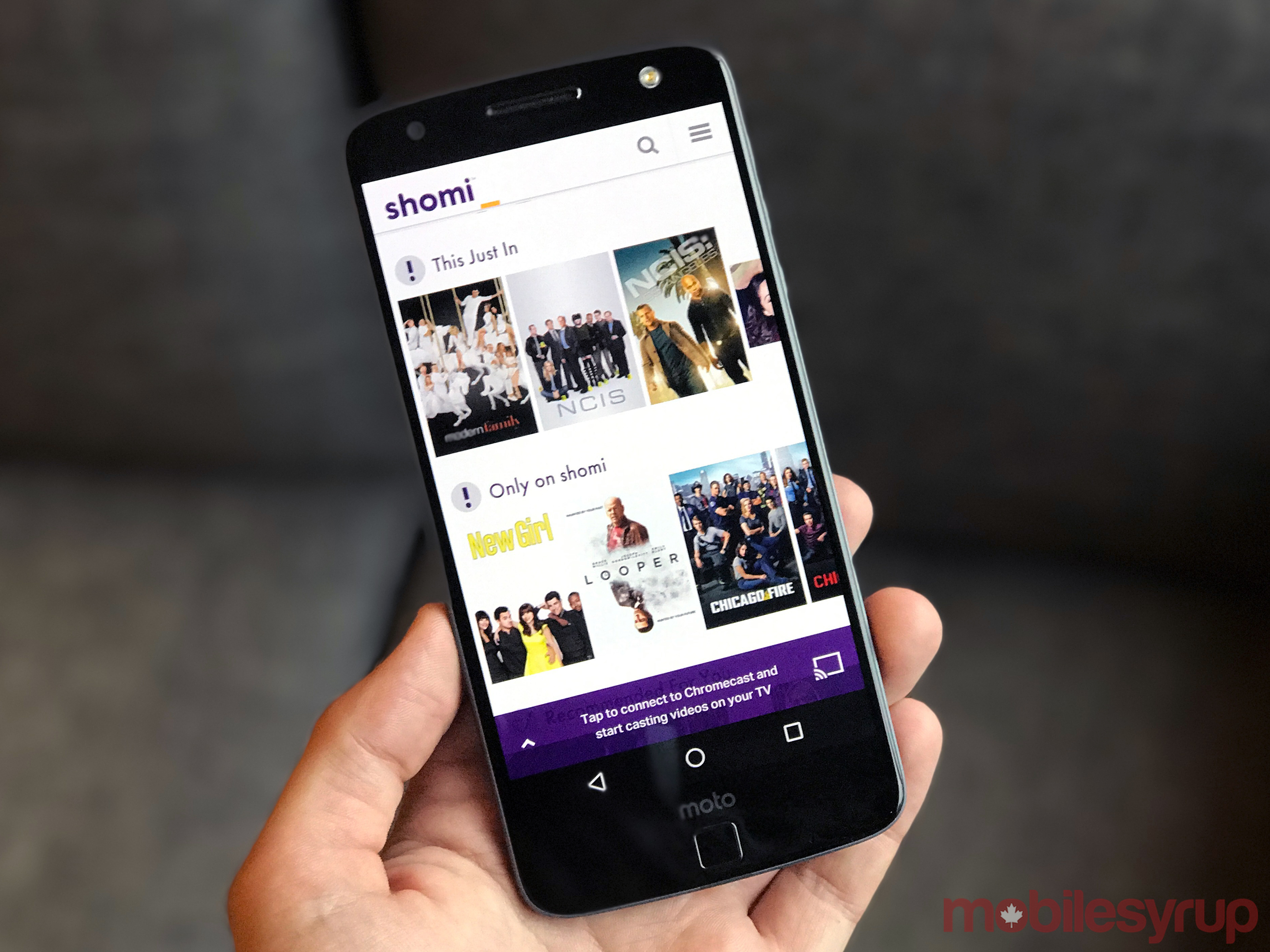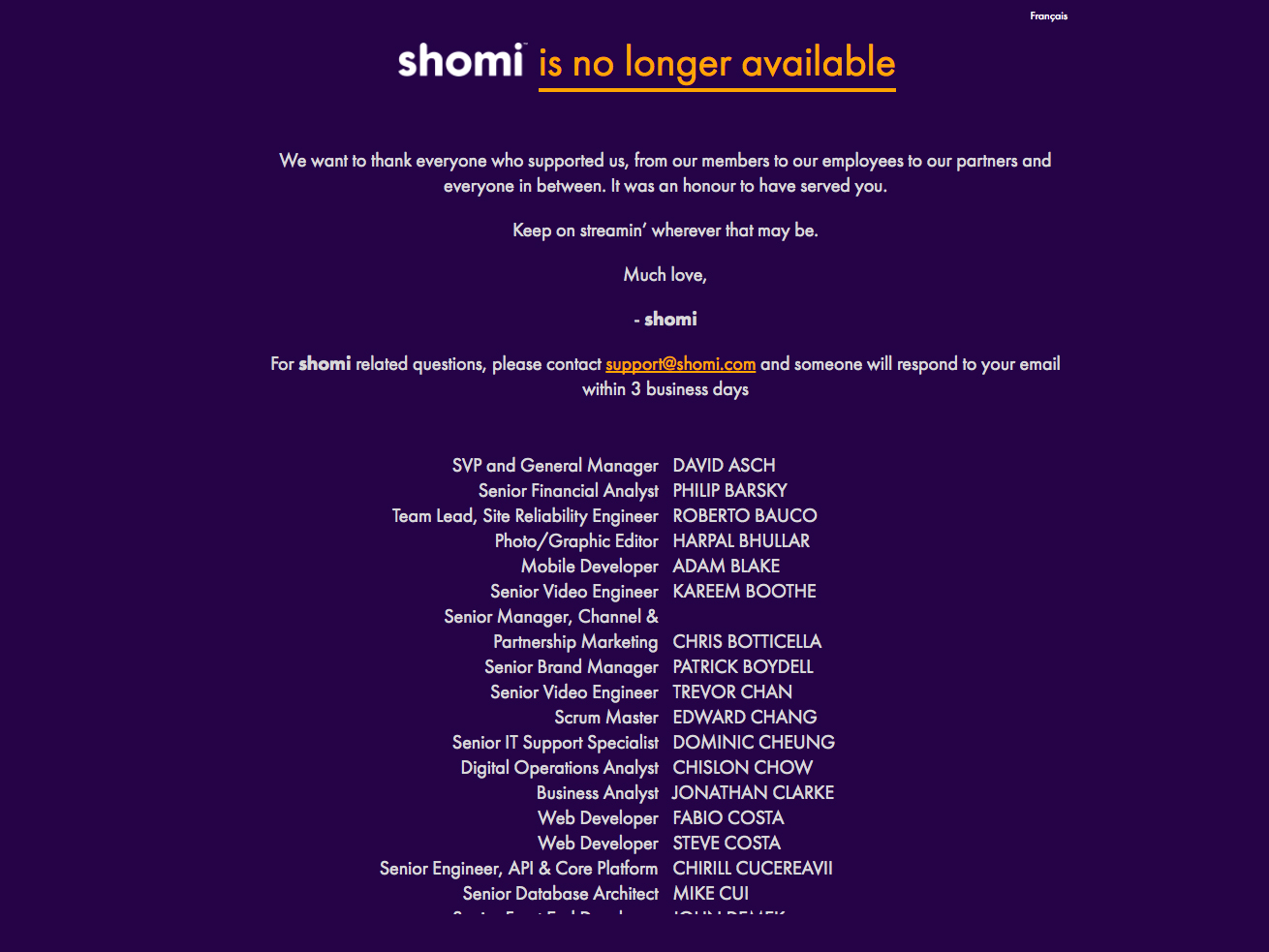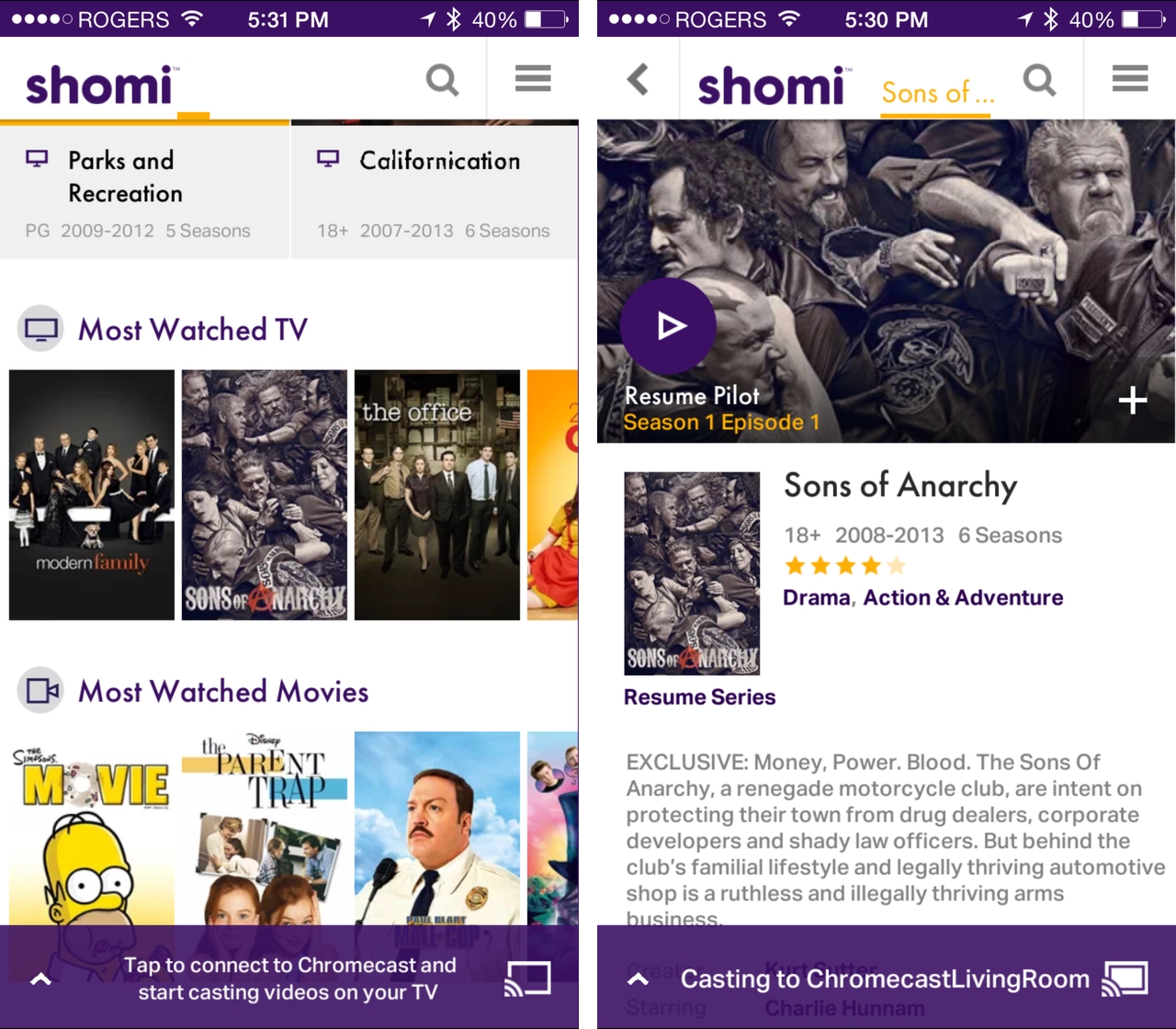
“Hey Shomis,” said Shomi general manager David Asch. That jingle marked the start of every team meeting at the jointly-owned Rogers-Shaw streaming service, but former Shomi employee Cassandra James, noted something different in his voice that afternoon.
“It was almost like he told us that our pet had died,” she remembered. She strolls into our meeting with her hands in the front pocket of her hoodie. After she reaches across the table to shake my hand, she recalls the day she found out that Shomi was shutting down.
“I actually left. There’s this thing with my anxiety that I don’t like people witnessing my emotions,” said James. She left the room immediately after hearing the news and headed to the washroom to wipe away the tears and splash cold water on her face. Upon leaving, she noticed several colleagues lined up outside the bathroom for what she presumed to be the same reason.
If content rules, Netflix is King
At this point, Shomi had been operational for two years and was the first English-language streaming service to launch in Canada after Neftlix. The two services were extremely similar in almost every way, from functionality to price. Some would even say that with Shomi’s cable box availability and $0 price tag with Rogers as of 2015, Shomi was the better choice for millions of Canadians, though it still lacked the extensive library of Netflix.
When Shomi employees came into work on September 26th, they had no way of knowing it would mark her company’s final month in existence, however, they had plenty of clues. Funding to several departments at Shomi were cut this past August. Not slashed — cut. The 100-person team lost several large content agreements, and slowly but surely, Rogers stopped promoting Shomi to its customers.
As James and her colleagues received the news, two HR representatives from Rogers were standing next to Asch, at the front of the room. The faces of her coworkers changed from worried to shocked as they realized that not only would Shomi shut down at the end of November, but that everyone working on the platform would also be let go. After recently leaving another career, she was nervous she’d have to switch careers for the second time in just a few years.
It was at this moment that James turned to her direct supervisor for comfort, but stopped short. It was the first time she’d ever seen her boss cry.
“It’s hard when you don’t have the same funding [as Netflix].”
They were told by their superiors that though they’d done everything they could, the fledgling video service just couldn’t compete with Netflix. James described the news as a punch in the stomach, but this also marks Canada’s latest knock out in our longstanding, yet one-sided, rivalry with the American entertainment machine.
Diana Rowe is a mother, a wife and a former employee in Shomi’s marketing department. She’s believes that Shomi’s fall has to do both with brand recognition and resources.
“I think Canadian brands have to figure it out. How do you build products that people gravitate to? It’s hard when you don’t have the same funding [as Netflix]. It’s almost a niche thing if you’re trying to support Canadian products,” said Rowe.
When it comes to culture, Canada is the baby of the family
In many ways, Canada is still coming of age in the digital video streaming era. Unlike our trailblazing southern neighbour or our distant English cousins, Canada’s formative years have seen unprecedented access to culture and content from around the globe. This often pits our underdeveloped content industry directly against the empirical cultural legacies of the world’s entertainment giants.
“There is an advantage to the Brits and the Americans because they have such an established system,” said Brenda Leadlay, the executive director of the B.C. Alliance for Arts and Culture. She goes on to agree that while Shomi came with her personal Rogers subscription in 2015, she’d subscribed to Netflix for years before that.
When Netflix came to Canada in 2010, no other service in the country compared, though the platform’s launch was somewhat rocky at first. Most on-demand services offered by Canadian carriers at the time were pay-per-watch and any attempts by carriers to introduce different payment models for content services had been shut down by the Canadian Radio Telecommunications Commission.
In contrast, Netflix gave Canadians a vast catalog of content to consume at their leisure, for a low flat monthly fee. One pay-per-view movie purchase from Rogers at approximately $7 would match an entire month’s worth of Netflix access.
Canada’s strict net neutrality laws prompted the CRTC to chastise services like Videotron for promoting their own content through the use of data caps — discussions which prompted hearings about differential pricing and zero rating in Canada’s wireless future.
Having dedicated her life to the arts, Leadlay believes that awareness of Canadian content and services should be prioritized over the organic consumer market. She compares it to the colour-blind casting movement taking place in the performing arts world. If Canadian services can’t catch up to the strength of American movements, putting rules in place is the only way to ensure their use.
While Canadian regulators have been debating this, Netflix has penetrated over 5.2 million out of approximately 13 million total Canadian households, and likely added over one million Canadian customers in 2016 alone.
Shomi’s death left many questioning whether the digital revolution would simply bring about a new brand of struggling Canadian entertainers in the form of digital content producers. One of the newly unemployed was James who had finally discovered her passion in digital content.
A new phase of struggling Canadian entertainment
Over 100 former “Shomis” were left with nothing except a vague promise that Rogers would try to hire as many people back as they could.
Rather than take their word for it, the team launched “hireshomi.com” with the hope of helping everyone find a new job as fast as possible. The former colleagues get together often, and refer to themselves as “Shomis” to this day.
As the weeks towards the shut-down progressed, the layoffs came in four waves. The first, which consisted of the 10 to 15-person marketing team, was the hardest, said James. She teared up while explaining that walking through rows of empty desks upon leaving the office that night made it real for her.
The dev-ops were part of the second wave, and James was part of the third. While she was given her end-date in advance, many of her colleagues received their papers on the same day. However, like her colleagues, James believes that with just a few more years, Shomi could have been “neck in neck with Netflix,” at least in Canada.
While the ‘Shomis’ were devastated upon simultaneously losing their jobs and their brand, millions of Canadians didn’t feel the loss as deeply as they did.
By the time Shomi and the Bell equivalent CraveTV entered the Canadian streaming space in 2014, anyone interested in a streaming service had already purchased a subscription with an American giant that had once again beat Canada to the punch.
A report stemming from the CBC revealed that while Netflix is well on its way to achieving 50 percent household penetration in Canada, Shomi had just under 900,000 subscribers — it’s also unclear how many of those subscribers were actually paying a subscription fee — before announcing its decision to shut down. Bell’s streaming service CraveTV recently hit one million subscribers.
Rowe goes on to say that she and her team struggled with their churn rate — the amount of customers that eventually left Shomi for another streaming platform.
She also says that acquiring licenses for content on streaming platforms is difficult when one service is more influential than the other. Content is licensed to platforms on either a regional or exclusive basis.
Canada caught between a cultural deficit and a financial risk
By the time Shomi arrived on the scene, Netflix had already obtained Canadian licenses for the most sought after content and was also powerful enough to insist on exclusive contracts from providers. While Shomi employees were thrilled to obtain the exclusive regional license for Modern Family, losing Scandal to Netflix’s exclusive contract with creator Shonda Rhimes hit them hard.
Rowe and James both spoke of a plan to one day follow in Netflix’s footsteps by launching original content on Shomi. CraveTV has already put this plan into action. “Original content was in the game plan,” said Rowe.
As someone who was moved from another department at Rogers to work with Shomi, and was later let go, Rowe often wonders if the government could have done more to protect the Canadian service, and whether it had a responsibility to do so.
The CRTC thinks they do, and recently criticized Rogers and Shaw for shutting down the service after just two years.
“Far be it for me to criticize the decisions taken by seasoned business people, but I can’t help but be surprised when major players throw in the towel on a platform that is the future of content — just two years after it launched. I have to wonder if they are too used to receiving rents from subscribers every month in a protected ecosystem, rather than rolling up their sleeves in order to build a business without regulatory intervention and protection,” said CRTC chairman Jean-Pierre Blais during a recent speech at the Canadian Chapter of the International Institute of Communications.
After shuttering the service, Shaw released a financial report that wrote Shomi off as a $182 CAD million dollar operation that yielded only $46 million in revenue over 2016. It’s important to keep in mind that Shaw’s stake in Shomi was just 50 percent, making it reasonable to assume that Rogers and Shaw together spent over $364 million on the streaming service in 2016 alone while generating just $92 million in returns.
Rogers and Shaw were asked to comment on Shomi as part of the reporting for this piece but did not immediately reply. Rogers did, however, begin offering a credit for Netflix immediately after sending out notice that Shomi would be shutting down.
In the meantime, customers can receive Netflix free with Rogers for the next six months and Amazon Prime Video just made its full Canadian launch.
The “Shomis” felt the loss on behalf of the whole country, but for most Canadians, life went on
While Canadians reevaluate their video streaming options, James adjusts to her new work life at Rogers. While Shomi and Rogers were technically part of the same company, the difference between them couldn’t be wider.
“For example, I just opened up a ticket with I.T. They won’t open that ticket until next week. If I opened up that ticket with Shomi it would be looked at the same day,” she explains.
Her commute to work is no longer a one-hour bus ride to the Shomi offices, but rather a one-hour car trip to the Rogers office in North York. However, the biggest difference is that James no longer feels like someone always has her back.
“It’s kind of like an old Polish grandmother,” she said of Rogers. “They have their one way of thinking and it’s really hard to change that way of thinking. Going to Shomi it was like going to work for your best friend every day. There was nothing against you, there was no belittling you, no micromanaging, nothing like that. It was a different atmosphere altogether,”
Currently, James knows only one person on her team and is still uneasy. While she’s technically been a Rogers employee for the last three years, she’s not as sure of herself within the company.
“At Shomi I always had a friend to talk to. Here, I don’t know if they want to be my friend,” said James.
James never doubted her faith in Shomi’s potential, however, saying that she thought it was “a saving grace for Canada.” Though, she’s begun to doubt Canada’s own sense of identity.
“Since Shomi shut down, I honestly have no clue where Canadian content is going.”
With the wave of American movies, television, music and now digital media, constantly crashing into Canadian homes, many have questioned whether Canada will forever remain a door mat on which Hollywood can wipe its boots.
The names of former Shomi employees interviewed in this story have been changed to protect their privacy.
MobileSyrup may earn a commission from purchases made via our links, which helps fund the journalism we provide free on our website. These links do not influence our editorial content. Support us here.







